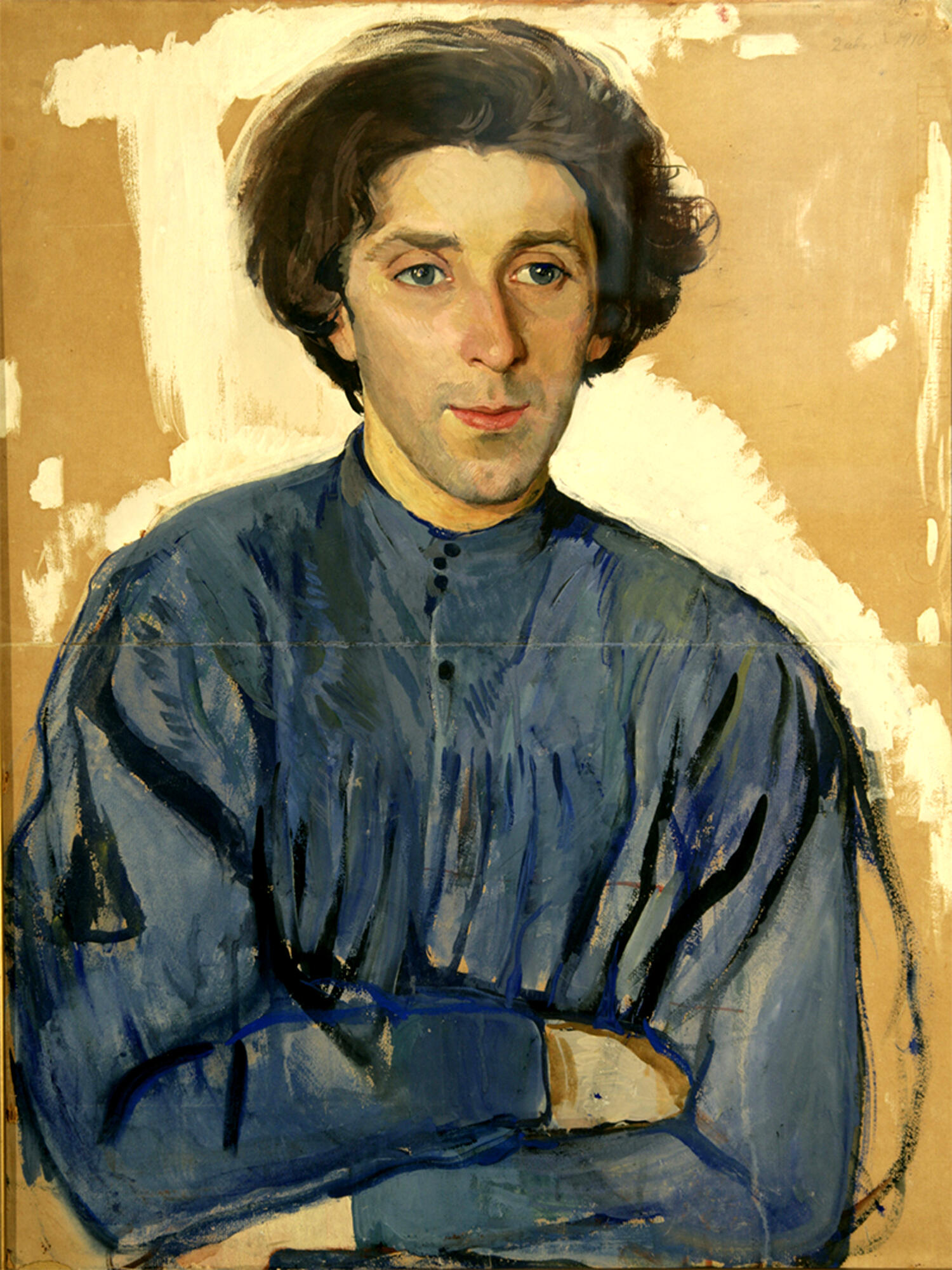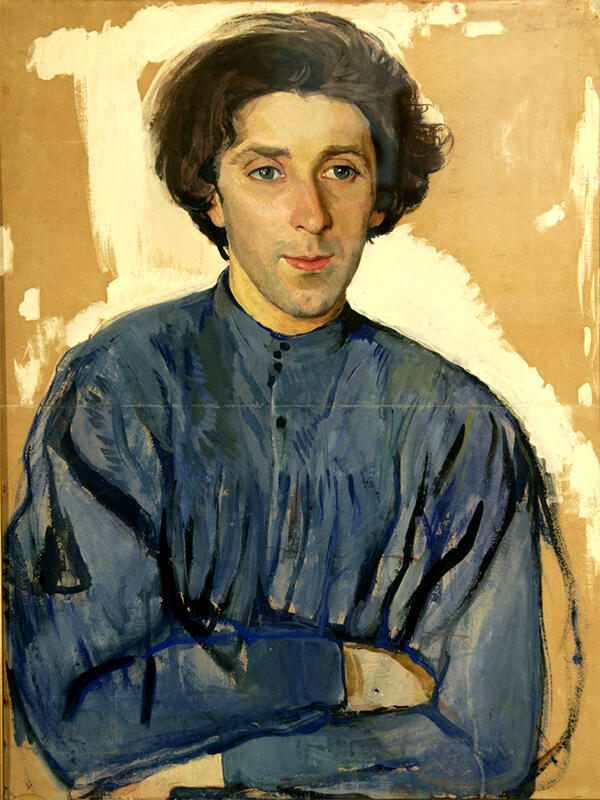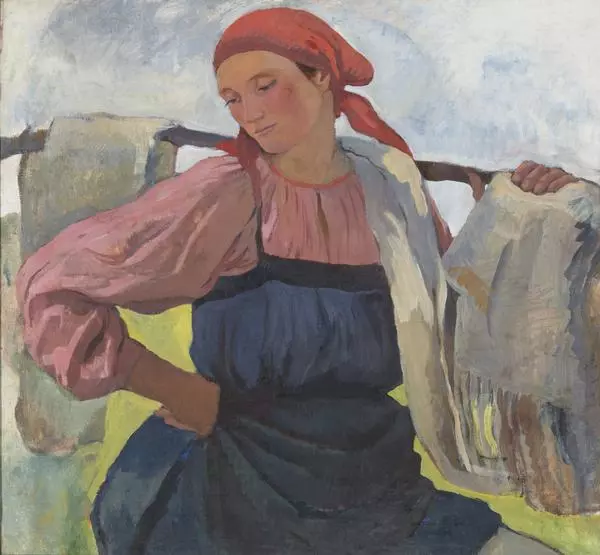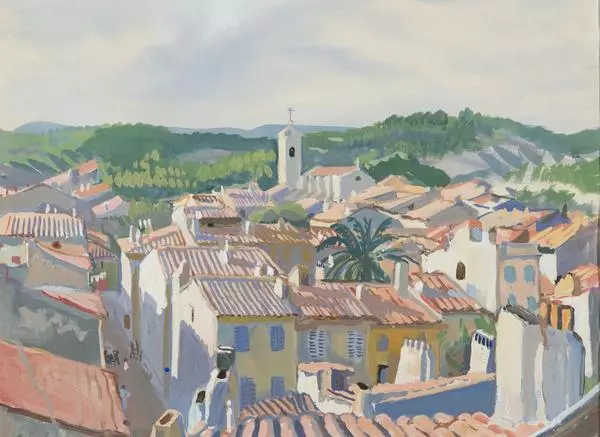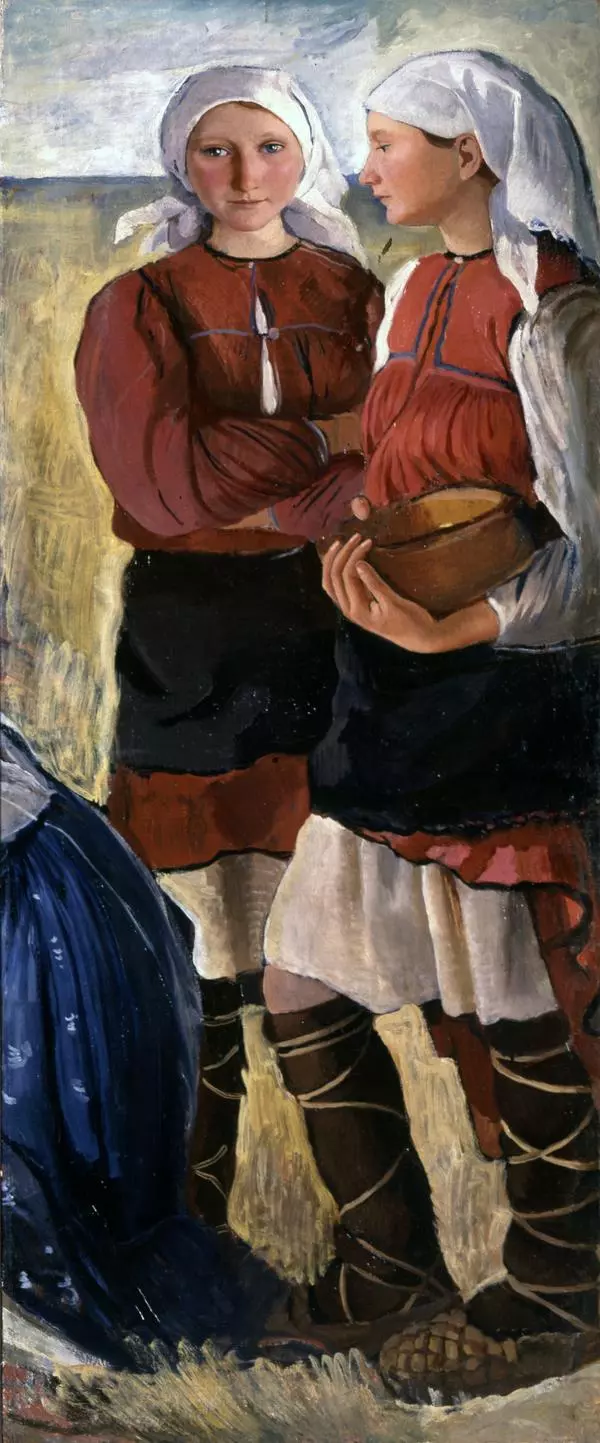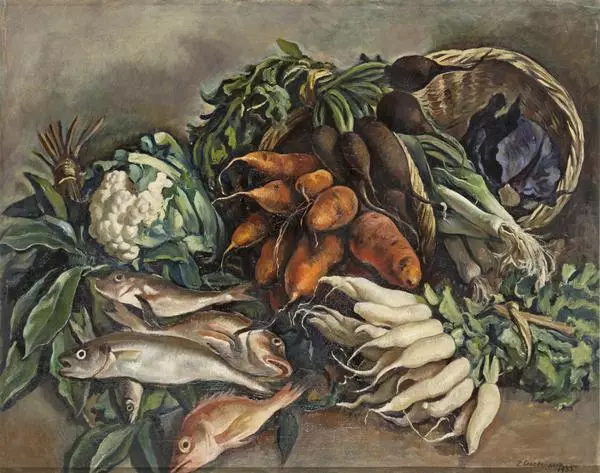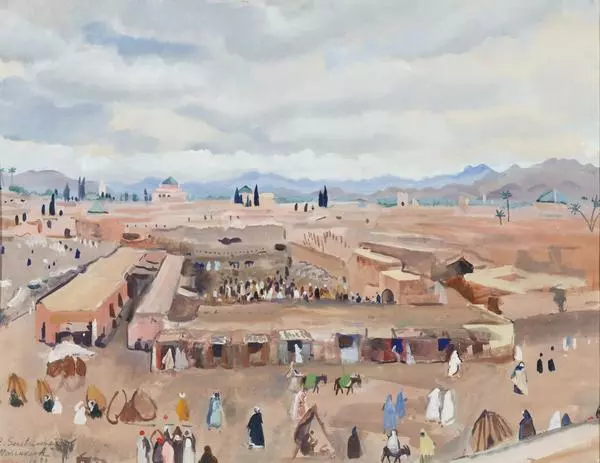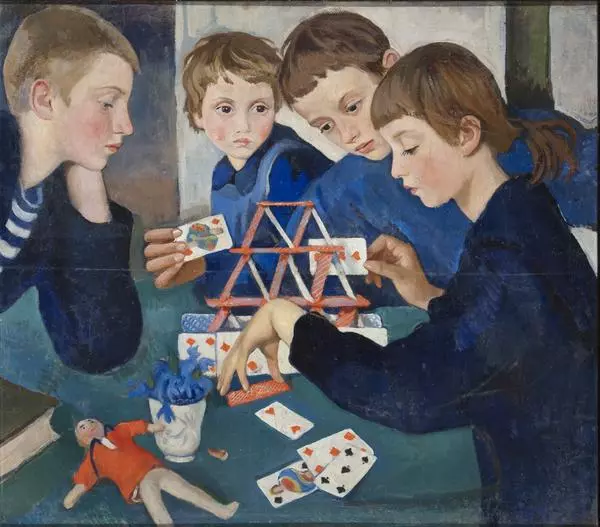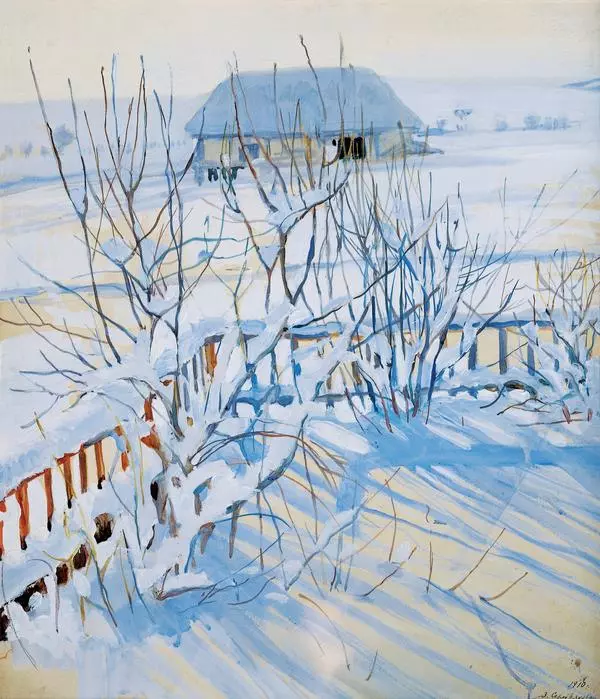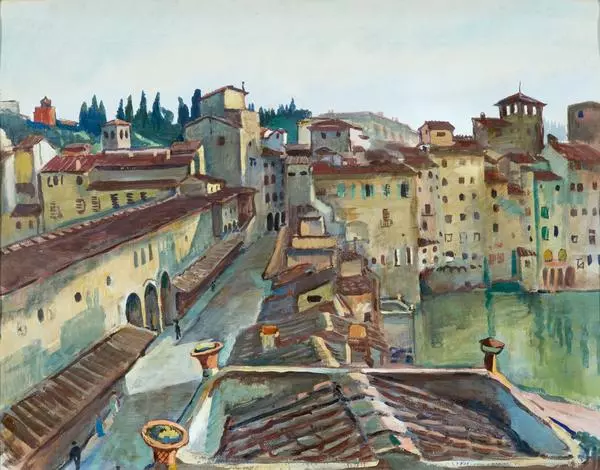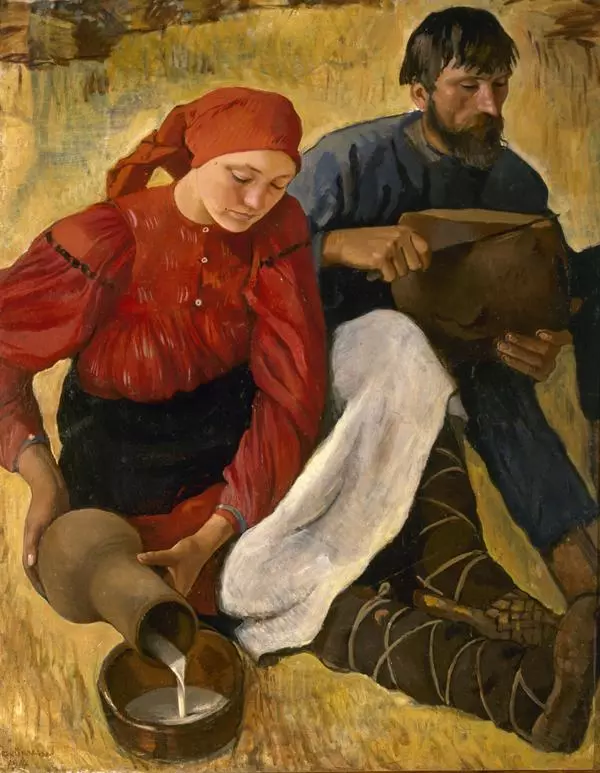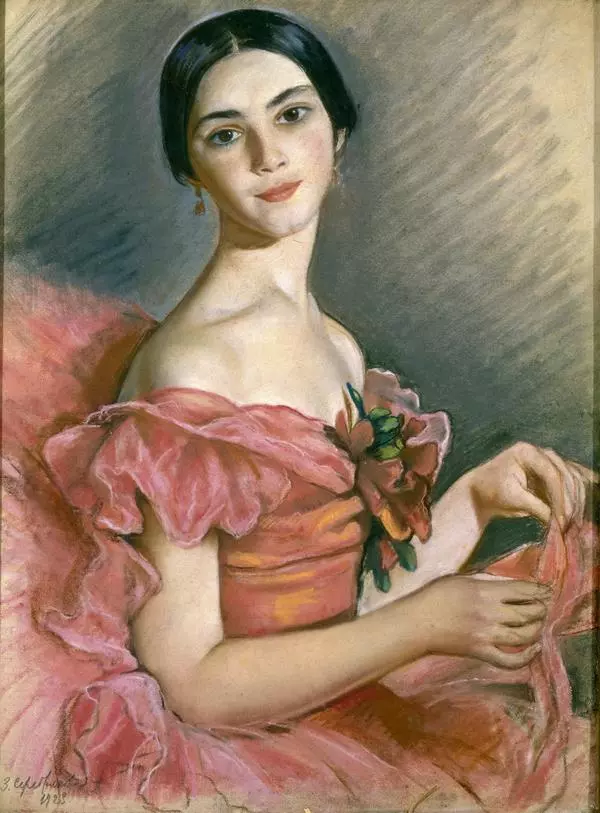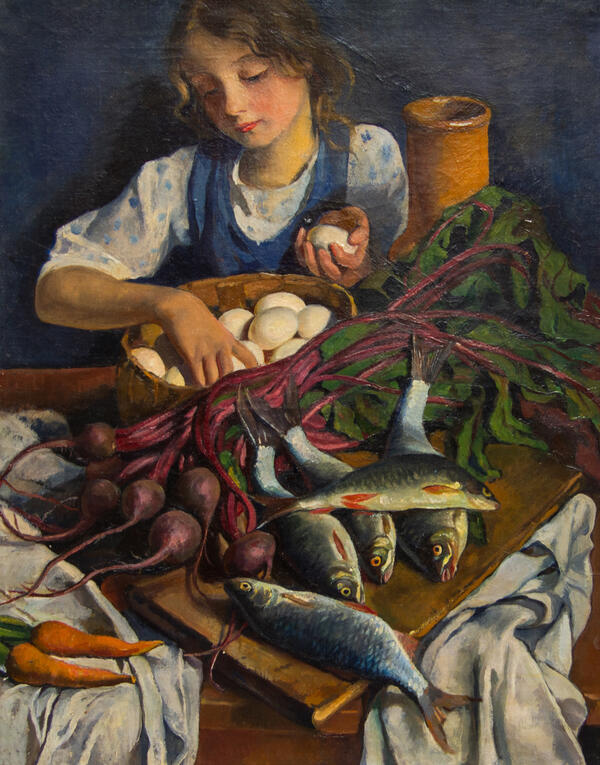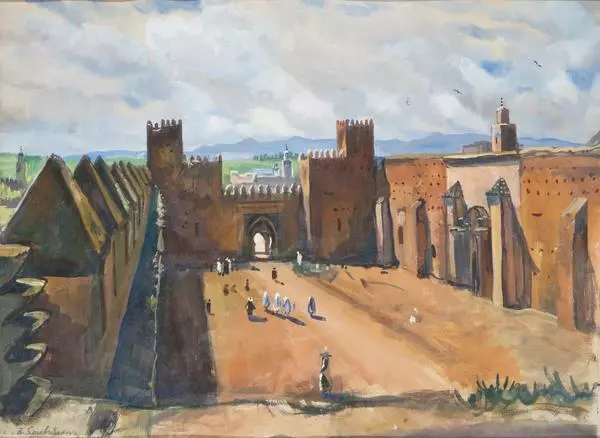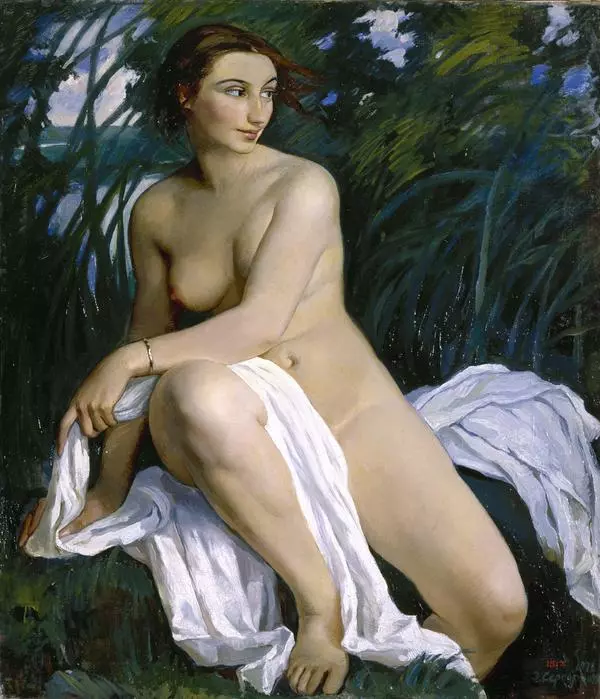Zinaida Lanceray, the future Serebriakova, was born in December 1884 in the family estate Neskuchnoye near Belgorod city in a creative family. Her father, Yevgeny Lanceray, was a gifted animal sculptor, uncle Alexandre Benois was an artist and art critic, and her other uncle Albert Benois was an artist, architect and academician. The atmosphere in the Lanceray household and the great dynasty of artists determined the girl’s personality and fate.
Zinaida Serebriakova worked at the time of many avant-garde movements, but none of them captured her. The creative characteristics of Serebriakova, mainly marked by a poetic and holistic perception of the world, were reflected in her works of different genres: landscapes, still life, large monumental compositions, and dozens of first-class portraits.
The artist’s greatest passion was the genre of portrait. She did not paint people of influence and tried to avoid depicting characters that were uninteresting and internally alien to her. Studying her portrait gallery, it becomes clear that the artist used to address the images of family and friends. Most of all she loved to paint those people whom she knew well, whose inner world was clear and accessible to her.
This is especially noticeable in the work of Serebriakova in the 1910s, when she lived in the family estate Neskuchnoye that became the ‘country’ of her creative inspirations. Here from 1909 to 1917 the artist created famous paintings and several portraits, including the portrait of Georgy Chulkov (February 1, 1879 [2], Moscow - January 1, 1939, Moscow), a well-known writer of his time.
Georgy Chulkov was a sensitive person. By the time the portrait was presented, he was already known as a poet and publicist and recognized among the Saint Petersburg literary and artistic elite. The pose of the depicted person is spontaneous and relaxed, the position of his hands is expressive. The charming face of a young man attracts special attention. His eyes transmit both the dreamy pensiveness and melancholy characteristic of the poet. Serebriakova accurately conveys the portrait features of the model. The poet’s shirt and hands, and the bright background are painted with large impressionistic strokes. Sunny tones and active blue, the favorite color of the Symbolists, emphasize the poet’s warm and open image. The work may partly resemble a sketch, but it cannot be called unfinished. Due to the artist’s special, very sensitive attitude to form and color, this portrait evokes a feeling of exceptional integrity.
Zinaida Serebriakova worked at the time of many avant-garde movements, but none of them captured her. The creative characteristics of Serebriakova, mainly marked by a poetic and holistic perception of the world, were reflected in her works of different genres: landscapes, still life, large monumental compositions, and dozens of first-class portraits.
The artist’s greatest passion was the genre of portrait. She did not paint people of influence and tried to avoid depicting characters that were uninteresting and internally alien to her. Studying her portrait gallery, it becomes clear that the artist used to address the images of family and friends. Most of all she loved to paint those people whom she knew well, whose inner world was clear and accessible to her.
This is especially noticeable in the work of Serebriakova in the 1910s, when she lived in the family estate Neskuchnoye that became the ‘country’ of her creative inspirations. Here from 1909 to 1917 the artist created famous paintings and several portraits, including the portrait of Georgy Chulkov (February 1, 1879 [2], Moscow - January 1, 1939, Moscow), a well-known writer of his time.
Georgy Chulkov was a sensitive person. By the time the portrait was presented, he was already known as a poet and publicist and recognized among the Saint Petersburg literary and artistic elite. The pose of the depicted person is spontaneous and relaxed, the position of his hands is expressive. The charming face of a young man attracts special attention. His eyes transmit both the dreamy pensiveness and melancholy characteristic of the poet. Serebriakova accurately conveys the portrait features of the model. The poet’s shirt and hands, and the bright background are painted with large impressionistic strokes. Sunny tones and active blue, the favorite color of the Symbolists, emphasize the poet’s warm and open image. The work may partly resemble a sketch, but it cannot be called unfinished. Due to the artist’s special, very sensitive attitude to form and color, this portrait evokes a feeling of exceptional integrity.
